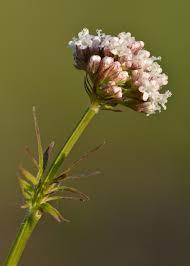Botanical Description:
Scientific Name: Asclepias tuberosa
Common Names: Pleurisy Root, Butterfly Weed
Description:
Pleurisy, scientifically known as Asclepias tuberosa, is a perennial herb with vibrant orange flowers. Despite its striking appearance, Pleurisy has a history in traditional medicine, offering potential therapeutic benefits. Explore the traditional uses, constituents, and applications of Pleurisy in this Materia Medica.
Disclaimer:
This Materia Medica is provided for informational purposes only and should not replace professional medical advice. Please consult with a qualified healthcare practitioner or herbalist before using any herbal remedies.
Therapeutic Actions:
- Respiratory Support:
- Pleurisy is traditionally used to support respiratory health, particularly in addressing conditions affecting the pleura.
- Anti-Inflammatory:
- Exhibits anti-inflammatory properties, contributing to its role in addressing inflammatory conditions.
- Diaphoretic:
- Pleurisy is considered to have diaphoretic effects, potentially aiding in promoting sweating during fevers.
- Expectorant:
- Used for its expectorant properties, Pleurisy may help in expelling mucus from the respiratory system.
Constituents:
- Saponins:
- Pleurisy contains saponins, contributing to its expectorant and potential anti-inflammatory effects.
- Flavonoids:
- Pleurisy contains flavonoids, which may contribute to its overall medicinal properties.
- Resin:
- The presence of resin in Pleurisy may play a role in its therapeutic actions.
Traditional Uses:
- Pleuritic Conditions:
- Pleurisy is traditionally used for conditions affecting the pleura, providing respiratory support.
- Coughs and Congestion:
- Used as an expectorant, Pleurisy may aid in relieving coughs and respiratory congestion.
- Fever Support:
- The diaphoretic effects of Pleurisy may be employed in promoting sweating during fevers.
- Anti-Inflammatory Applications:
- Pleurisy may be used for its anti-inflammatory properties in addressing various inflammatory conditions.
Dosage and Preparation:
- Pleurisy Tincture:
- Tinctures prepared with Pleurisy can be used internally. Dosage may vary, and it’s essential to follow recommended guidelines.
- Infusion:
- Infusions can be made using dried Pleurisy root for internal use. Dosage should be in accordance with recommended guidelines.
- Decoction:
- Decoctions involving simmering Pleurisy root may be used for certain respiratory conditions.
Cautions and Considerations:
- Pregnancy and Breastfeeding:
- Safety during pregnancy and breastfeeding is not well-established, and consultation with a healthcare professional is recommended.
- Allergies:
- Individuals with known allergies to plants in the Asclepias genus should avoid Pleurisy.
- Chronic Conditions:
- Individuals with chronic respiratory conditions should consult with a healthcare professional before using Pleurisy.
Conclusion:
Pleurisy, with its striking orange blooms, holds a place in traditional herbalism for its potential respiratory support and anti-inflammatory effects. Whether addressing pleuritic conditions, coughs, or fevers, Pleurisy offers potential benefits. Whether used in tinctures, infusions, or decoctions, Pleurisy provides accessible options for those seeking natural remedies. Precautions are necessary, especially for certain populations or individuals with specific health concerns. This Exhaustive Materia Medica aims to provide comprehensive insights into Pleurisy’s botanical description, therapeutic actions, constituents, traditional uses, dosage, precautions, and applications. For personalized guidance, consultation with healthcare professionals or herbalists is recommended to ensure safe and effective utilization of Pleurisy as a herbal remedy.





